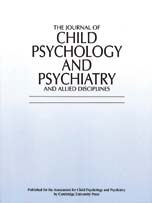No CrossRef data available.
Emanuel Miller Lecture: Developmental Risks (Still) Associated with Early Child Care
Published online by Cambridge University Press: 23 October 2001
Abstract
In the mid to late 1980s a major controversy erupted when Belsky's (1986, 1988, 1990) analysis of research produced the conclusion that early and extensive nonmaternal care carried risks in terms of increasing the probability of insecure infant–parent attachment relationships and promoting aggression and noncompliance during the toddler, preschool, and early primary school years. Widespread critiques of Belsky's analysis called attention to problems associated with the Strange Situation procedure for measuring attachment security in the case of day-care reared children and to the failure of much of the cited research to take into consideration child-care quality and control for background factors likely to make children with varying child-care experiences developmentally different in the first place. In this lecture, research concerning the developmental effects of child care and maternal employment initiated in the first year of life that has emerged since the controversy broke is reviewed. Evidence indicating that early, extensive, and continuous nonmaternal care is associated with less harmonious parent–child relations and elevated levels of aggression and noncompliance suggests that concerns raised about early and extensive child care 15 years ago remain valid and that alternative explanations of Belsky's originally controversial conclusion do not account for seemingly adverse effects of routine nonmaternal care that continue to be reported in the literature.
- Type
- Lecture
- Information
- The Journal of Child Psychology and Psychiatry and Allied Disciplines , Volume 42 , Issue 7 , October 2001 , pp. 845 - 859
- Copyright
- © 2001 Association for Child Psychology and Psychiatry


